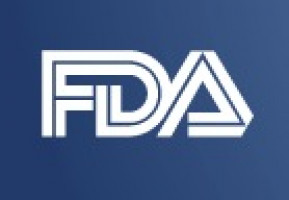
The U.S. Food and Drug Administration has approved niraparib for the maintenance treatment (intended to delay cancer growth) of adult patients with recurrent epithelial ovarian, fallopian tube or primary peritoneal cancer, whose tumours have completely or partially shrunk (complete or partial response, respectively) in response to platinum-based chemotherapy.
Niraparib is a poly ADP-ribose polymerase (PARP) inhibitor that blocks an enzyme involved in repairing damaged DNA.
By blocking this enzyme, DNA inside the cancerous cells may be less likely to be repaired, leading to cell death and possibly a slow-down or stoppage of tumour growth.
Approval was based on a randomised trial (NOVA) of 553 patients with recurrent epithelial ovarian, fallopian tube, or primary peritoneal cancer who had received at least two prior treatments of platinum-based chemotherapy and were in a complete or partial response to the most recent chemotherapy treatment.
Patients were randomised (2:1) within 8 weeks of the last therapy to either niraparib (300 mg orally daily) or matched placebo. Patients were assigned to one of two cohorts based on the BRACAnalysis CDx.
Patients with deleterious or suspected deleterious germline BRCA mutations (gBRCAm) were assigned to the germline BRCA- mutated (gBRCAmut) cohort (n=203), and those without germline BRCA mutations were assigned to the non-gBRCAmut cohort (n=350).
The trial demonstrated a statistically significant improvement in progression-free survival (PFS) for patients randomised to niraparib compared with placebo in both cohorts.
The estimated median PFS for those taking niraparib who had a germline BRCA mutation was 21 months compared with 5.5 months for those in the gBRCAmut cohort receiving placebo (HR=0.26; 95% CI: 0.17, 0.41; p<0.0001).
The estimated median PFS for those taking niraparib who did not have a germline BRCA mutation was 9.3 months compared with 3.9 months for those patients in the non-gBRCAmut cohort receiving placebo (HR=0.45; 95% CI: 0.34, 0.61; p<0.0001).
“Maintenance therapy is an important part of a cancer treatment regimen for patients who have responded positively to a primary treatment,” said Richard Pazdur, M.D., acting director of the Office of Hematology and Oncology Products in the FDA’s Center for Drug Evaluation and Research and director of the FDA’s Oncology Center of Excellence. “Niraparib offers patients a new treatment option that may help delay the future growth of these cancers, regardless of whether they have a specific genetic mutation.”
Niraparib’s safety was evaluated in 367 patients with platinum-sensitive recurrent ovarian, fallopian tube, and primary peritoneal cancer in the NOVA trial.
The most common adverse reactions occurring in at least 10% of patients receiving niraparib were thrombocytopenia, anemia, neutropenia, leukopenia, palpitations, nausea, constipation, vomiting, abdominal pain/distention, mucositis/stomatitis, diarrhoea, dyspepsia, dry mouth, fatigue, decreased appetite, urinary tract infection, AST/ALT elevation, myalgia, back pain, arthralgia, headache, dizziness, dysgeusia, insomnia, anxiety, nasopharyngitis, dyspnea, cough, rash, and hypertension.
Myelodysplastic syndrome and/or acute myeloid leukemia occurred in 5 of 367 (1.4%) patients receiving niraparib and in 2 of 179 (1.1%) patients assigned to placebo. Grade 3-4 hypertension occurred in 9% of niraparib- treated patients compared with 2% of patients assigned to placebo.
Full prescribing information is available here.
Source: FDA
We are an independent charity and are not backed by a large company or society. We raise every penny ourselves to improve the standards of cancer care through education. You can help us continue our work to address inequalities in cancer care by making a donation.
Any donation, however small, contributes directly towards the costs of creating and sharing free oncology education.
Together we can get better outcomes for patients by tackling global inequalities in access to the results of cancer research.
Thank you for your support.